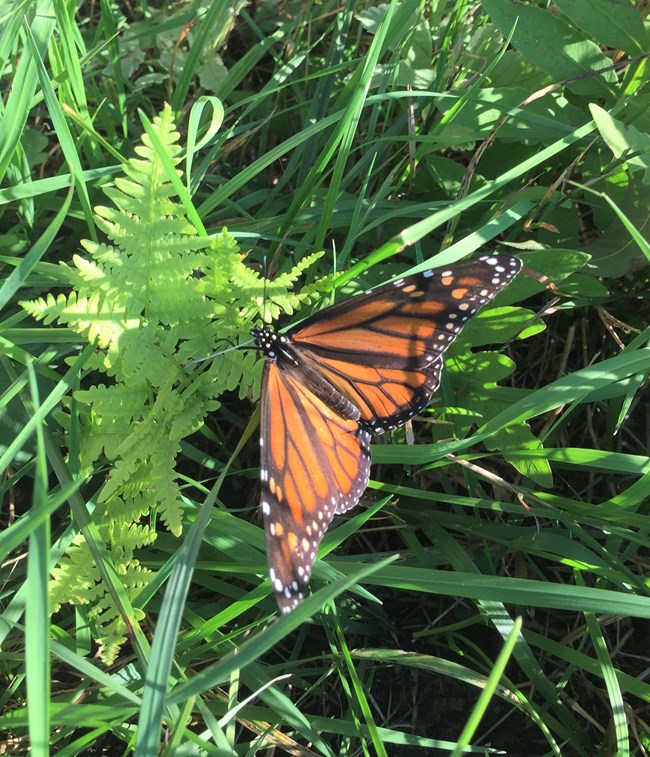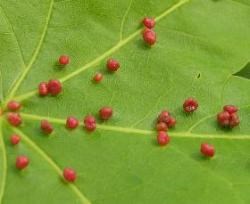
NPS photo The many terrestrial and aquatic environments at Pictured Rocks National Lakeshore offer great habitat where small creeping, crawling, swimming, and buzzing creatures can live and breed. Insects (along with their arthropod relatives the spiders, millipedes, mites, and tiny aquatic zooplankton) make up the bulk of the park's animal life.
Ecological Importance The important role of insects is clear to scientists. Bees and flies function as pollinators, and scavengers like beetles break down dead plant and animal matter. High numbers of many species such as mosquitoes provide food for bats and other hungry creatures. Insect monitoring at the lakeshore has primarily focused on aquatic insects and larvae as they are good indicators of water quality. The presence of mayfly, stonefly, and caddisfly larvae in the lakeshore's cold fast-flowing streams indicate that these waters are in good ecological health. Studies of aquatic life in the park's inland lakes have identified more than 100 taxa of benthic (bottom sediment) organisms. These include representatives of water bugs, water beetles, caddisflies, butterflies, dragonflies/damselflies, mayflies, fishflies/alderflies and true flies. The benthic communities in the shallower, near-shore areas show more diversity than the deepest regions of the lakes. Pictured Rocks is one of several parks involved in a regional NPS study to detect the presence of mercury in aquatic environments by sampling dragonfly larvae. Information from this study will help scientists understand how mercury in northern lakes spreads throughout the aquatic food web. 
Richard Orr photo What's On That Leaf? Non-Native Insects For more information… |
Last updated: September 9, 2022
